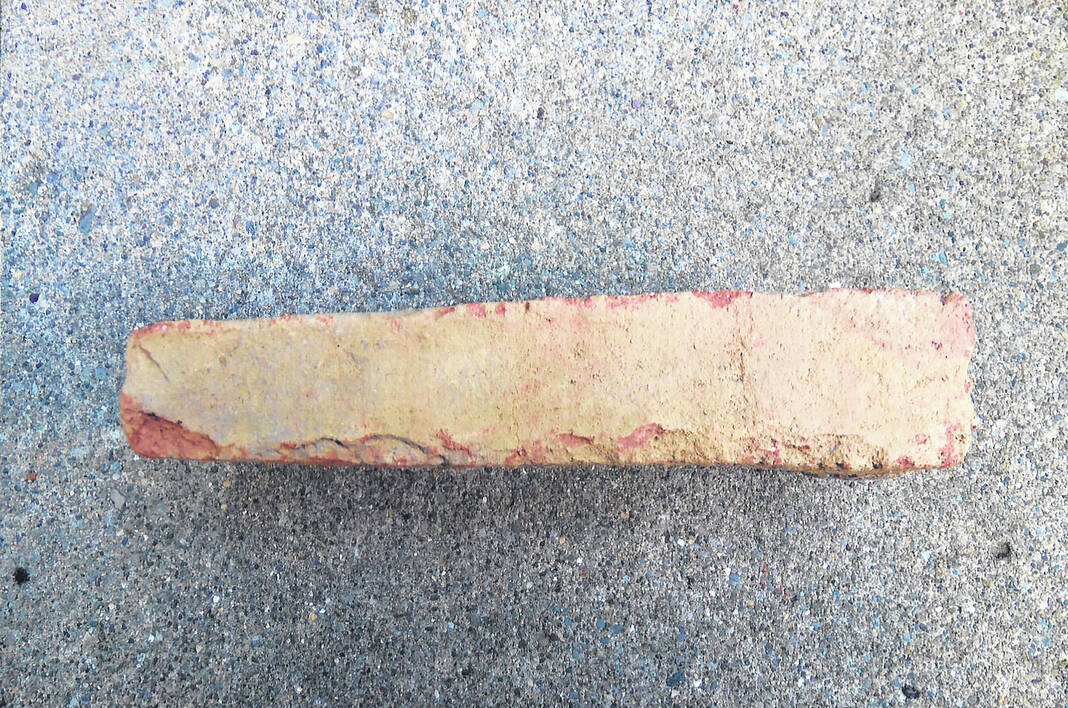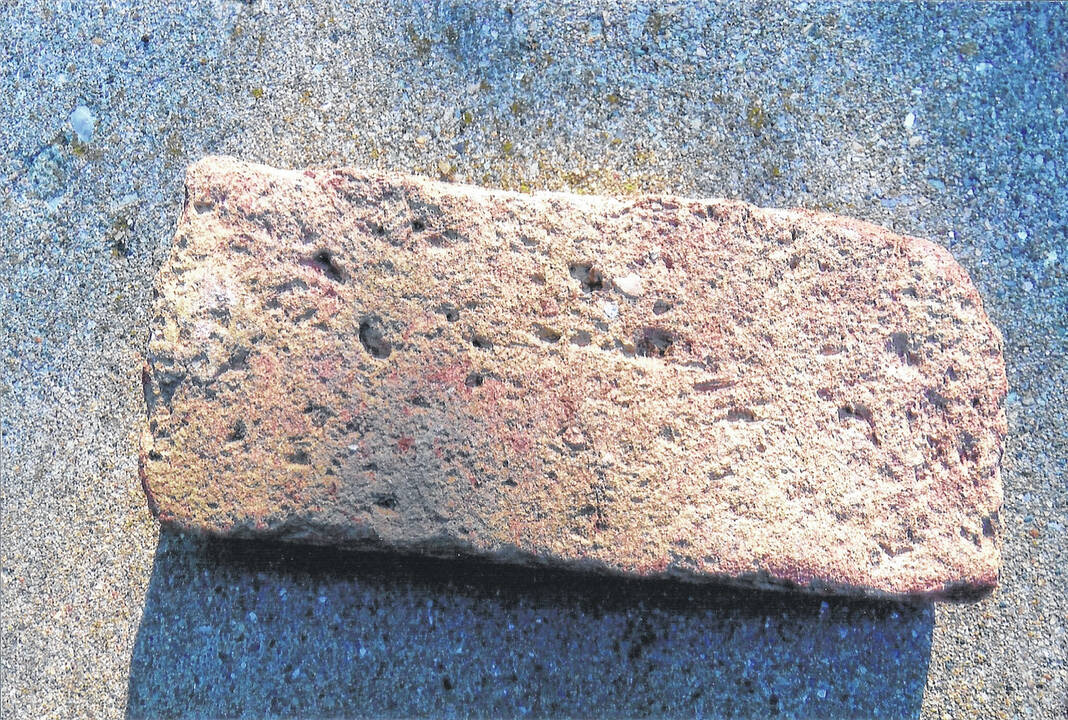
This brick is narrower on one end and wider on the other. This asymmetry was common in bricks handmade before 1800.
Provided photo

Straw and weeds were mixed with clay when molding the bricks. When the bricks were fired, the organic material burned leaving holes in the finished product.
Provided photo
Submitted by
Friends of Fort Jefferson
ln Oct. 1793, when Anthony Wayne decided to winter in the place now called Greenville, he needed to quickly order hutting for the army.
First, he built eight large exterior redoubts, the first line of defense, that would encircle 300 yards outside his preferred camp site for the army. On Nov. 6, the redoubts were almost finished. Wayne ordered the main campground to be marked for hutting. There were to be two rows of huts, 14 foot in the clear, for the enlisted men surrounding the main camp. The camp was 500 yards long and 264 yards wide. Later, a picket of 10-foot-high logs would be constructed on the outside of the enlisted men’s huts. Anthony Wayne stated on Nov. 6, “for the purpose of hutting, the officers are to see that the enlisted men are housed first, after which they were allowed to use the men to build their own housing” – On Nov. 26, 1793, “The officers will please direct the building of their own huts”.
Let’s jump forward to the year 2007. The Methodist Church, in Greenville, decided to enlarge their West Third Street parking lot. Archaeologist Tony DeRegnaucourt was given six weeks to survey the area. The fort midden layer was quickly found in the front yard along the sidewalk. Along with many fort period artifacts, was unearthed a white clay floor which seemed to be the floor of an officer’s hut. At one end of the hut was a fireplace and it still had remnants of ash in it. An ash shovel (on display at Garst Museum) was also found next to the firepit. The floor of the hut seemed to be approximately 18’X12’ but may have been larger since the north and east side of the floor were no longer intact due to modern sidewalk interference.
The strange thing was, there were old hand made, fort period, bricks in this midden layer scattered near the fireplace. ln those days it took a lot of time to mold brick, air dry it, and fire the brick. There was no time to make bricks before these huts were built. Wayne Legion buttons, 62 Cal. riffle balls, and other fort period artifacts were found in this midden next to the bricks. We could only assume that a hearth was made later or were these bricks not even associated with the hut. Could they be from a different occupation or period?
Now comes the “AHA” moment. While reading Wayne’s orderly notes the following passage was found on Nov. 30, 1793. “It is the desire of the Commander and Chief that you cause to be taken down and loaded in the wagons which now go for that purpose sixteen hundred good brick — observing not to molest any chimneys or works in the immediate possession of Mrs. Wilkinson, or any officer at Fort Jefferson — but to take them from any building not necessarily inhabited at the garrison.” The Fort Jefferson bricks were being repurposed.
Now we know that the bricks found in the officer’s hut chimney area at Greene Ville, were likely to be Fort Jefferson bricks. ln addition, while examining the Indiana Historical Society drawing of Ft. Jefferson, we now understand why it is so difficult to locate the chimneys that had been on the south side of that fort.

